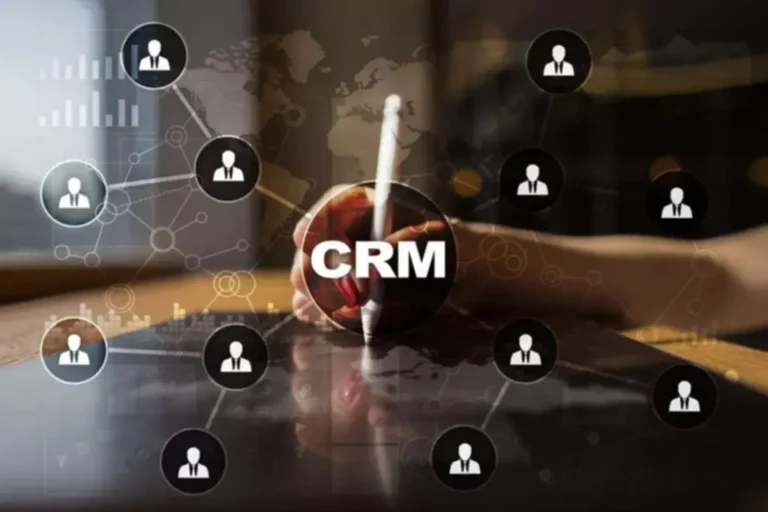Retaining customers is extra than just preserving them around—building strong, long-lasting relationships and constantly assembly their evolving wants. By understanding their pain factors and offering customized options, you possibly can encourage loyalty and drive progress. With the right technology and continuous enchancment, your corporation can stay forward, let go of what not serves you, and keep growing. If you’re on the lookout for a dependable software program growth firm to turn your concept into a top-quality software product, contact our team today. There are varied approaches to testing, and you’ll likely adopt a mixture of strategies throughout this phase.
The verification and validation model tends to be resource-intensive and rigid. For projects with clear necessities where testing is necessary, it may be helpful. Sometimes, each stage have to be https://www.globalcloudteam.com/ accomplished earlier than the following one can begin, and extensive documentation is required to make certain that all duties are completed earlier than shifting on to the subsequent stage.
The planning stage is the muse of the part of the SDLC, the place the scope of the upcoming project is outlined, and the feasibility is assessed by the development group. It involves a radical analysis of present methods to determine areas for enchancment and to determine project objectives. This stage sets the tone for the entire lifecycle, making certain that the project is well-grounded in actuality and aligned with business objectives. Testing is a important stage of the system development life cycle, providing validation for each system element and the system as an entire. This stage ensures that every one aspects of the system operate as supposed and meet the mandatory specifications before deployment. Rigorous testing minimizes the risks of system failure post-launch and ensures a clean transition to the operational section.
It is commonly incorrectly equated with the precise development process AI For Small Business however is rather an extensive prototyping stage. SDLC fashions can therefore help initiatives to iterate and improve upon themselves time and again till essentially perfect. The Large Bang model is extremely flexible and doesn’t observe a rigorous course of or process. It’s largely used to develop broad ideas when the shopper or consumer isn’t sure what they need. This can embody handling residual bugs that weren’t capable of be patched before launch or resolving new points that crop up because of consumer reviews. Larger systems could require longer upkeep stages in comparability with smaller techniques.
The Software Improvement Life Cycle (sdlc)
Creating a software requirement specification document is essential for defining what the system is meant to achieve and the issue it aims to unravel. It ensures that the project stays centered and aligned with the intended outcomes throughout its life cycle. The iterative nature of the System Design Life Cycle (SDLC) means the method isn’t strictly linear; as an alternative, it includes revisiting and refining phases based mostly on suggestions and evolving requirements. The last step is operations and upkeep, when the system is monitored for any developing points and observations are made about any improvements that could possibly be wanted. Updates and repairs shall be carried out as necessary, and customers will often be surveyed to see if the model new system meets their needs and expectations. Historically, formalized SDLC procedures emerged within the Sixties, reflecting the growing complexity of methods as computer technology advanced.
Design Patterns
It is important that you have contingencies in place when the product is first launched to market should any unexpected points arise. Microservices architecture, for example, makes it easy to toggle options on and off. A canary launch (to a limited number of users) may be utilized if needed. This course of entails detecting the potential bugs, defects, and errors, searching for vulnerabilities, and so on., and may typically take up much more time compared to the app-building stage.

Ongoing studying and talent enhancement are essential to maintain up with the changing panorama of DevOps practices and tools. Efficient integration demands thorough planning, compatibility checks, and extensive testing to guarantee that the tools operate harmoniously. Following finest practices that reinforce a secure SDLC is crucial to tie all these collectively.

Even easy functions profit from a structured approach to planning, growth, and testing. The DevOps Mannequin is a tradition and set of practices that combine software development (Dev) and IT operations (Ops). The goal is to shorten the software supply cycle and improve product high quality via automation, collaboration, and continuous feedback. DevOps promotes CI/CD (Continuous Integration and Continuous Deployment), the place code modifications are automatically tested and deployed in rapid succession.
Regardless of the mannequin chosen, documentation is crucial in the SDLC, usually done in parallel with the development course of. In Contrast To conventional development approaches, this model acknowledges that every part may need to be revisited as required. This means the DevOps workflow is designed with future iterations and former versions in mind. Essentially, insights from earlier iterations will help shape the next one, and the current iteration will also provide priceless feedback for what’s next. This part typically includes collaboration from all groups to make sure each aspect of the planning is covered. This integration helps ensure that each new code change is routinely checked for safety points, permitting teams to detect and fix vulnerabilities before hackers can exploit them.
The Software Program Improvement Life Cycle (SDLC) is a step-by-step course of used by development teams to design, develop, take a look at, and keep software. It serves as a roadmap for building software effectively and systematically, reducing the risk of project failure and guaranteeing consistency, clarity, and control. Whether you’re new to software program growth or a seasoned IT skilled, understanding the SDLC is crucial to delivering high-quality software program that meets consumer expectations and stands the take a look at of time.
The mannequin may be considered as a blueprint for fulfillment; following it blindly doesn’t necessarily guarantee success, however it increases the likelihood that the client shall be proud of the outcomes. Software Program improvement is a broad matter, and it can cowl every thing from net design tools and online forms to extra strong machine studying or back-end systems. Whether Or Not your team is involved in writing code in the browser or doing more strong improvement, they need a roadmap. A software program requirements specification (SRS) document that was created during the early phases is often complemented with extra detailed knowledge and structure that can later be utilized during growth.
- Rigorous testing minimizes the risks of system failure post-launch and ensures a clean transition to the operational phase.
- The 5 phases of the SDLC are Requirement Analysis, Design, Implementation, Testing, and Maintenance.
- Any present information that is being retained from a earlier system will be migrated to the brand new system.
- Retention methods, like personalized experiences and loyalty packages, can foster long-term relationships and generate recurring income, ultimately making them a useful part of any business model.
What Were The 5 Original Phases Of System Improvement Life Cycle?
Many of those distributors also have a powerful give consideration to figuring out and de-bugging techniques which will help the process of testing in software growth life cycles. In many circumstances, SDLC groups make the most of a variety of software solutions to help the varying phases. For example, necessities could also be gathered, tracked and managed in a single answer whereas testing use circumstances could take place in a completely completely different resolution. In most instances, a system describes an IT technology such as hardware and software. Project and program managers, system and software engineers, improvement groups and finish users all take part in the SDLC.
In different words, the techniques growth life cycle is a superset of the software improvement lifecycle. Improvement groups code and build the system utilizing numerous instruments, adhering to the design paperwork created within the previous stage. This process also necessitates a concentrate on application safety to make sure the safety of knowledge and system integrity from the outset.
This is where Static Application Safety Testing or SAST tools come into play. In theory, the entire prior planning and outlining should make the actual development phase comparatively simple. The Implementation phase entails deploying the developed system into a stay setting. Key activities embody system installation define system development life cycle, migrating knowledge, training customers, and configuring infrastructure. This part requires thorough planning to make sure a easy transition from the existing system to the new one with minimal disruptions. The System Development Life Cycle (SDLC) provides a well-structured framework that offers an thought, of how to construct a system.
Penetration testing mimics hacker habits to gauge how properly the app can withstand intentional attacks. By deciding on essentially the most suitable methodology, groups can enhance efficiency, manage dangers, and ship software program that meets or exceeds expectations. The Implementation phase is the place developers deliver the design to life via coding. This is essentially the most hands-on phase in the SDLC, the place the software’s options and performance are carried out based mostly on the design specifications. The goal is to uncover bugs, verify functionality, and make certain the system meets each the documented necessities and consumer expectations.
